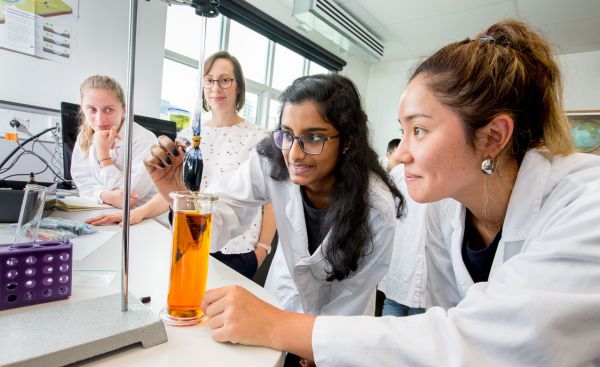STEM superstars call for more gender and cultural diversity
They specialise in different science, technology, engineering and maths (STEM) subjects but all have one thing in common – they’re all STEM superstars.
Associate Professor Kim-Anh Le Cao, astrophysicist Clare Kenyon, Dr Kylie Soanes, Dr Maria del Mar Quiroga and Priyanka Pillai have been named Australia’s official Superstars of STEM by Science and Technology Australia.
The five University of Melbourne academics are part of a 60-strong group of brilliant women in science, technology, engineering and mathematics who want to step into the spotlight as media stars and have been chosen for the national program to give women in STEM stronger skills and confidence to have expert commentary roles in the media.
“My mission is to get people excited about urban nature,” conservationist biologist Dr Soanes said.
“I have always loved sharing stories about science and nature with people. My research has enormous potential to engage broad audiences in science and nature conservation and I’m willing to step up and advocate for issues that are important.”
Ms Pillai said she realised the significance of sharing her own STEM story when she participated in a STEM outreach event in 2017, which resulted in great feedback from parents of girls aspiring to STEM careers.
“The positive response made me feel grateful to have opportunities where I can inspire young girls to pursue careers in STEM,” she said. “I really want to keep encouraging parents and teachers to invest time in listening and actively suggesting new ideas for young people, especially girls, to try out.”
The Stem Superstars cohort for 2021-22 was announced today by the Minister for Science, Karen Andrews with the University of Melbourne leading the announcement with the most recipients.
Science & Technology Australia Chief Executive Officer, Misha Schubert, said the program aims to smash stereotypes of what a scientist, technologist, engineer or mathematician look like.
“Sustaining this type of program for the long-term is more important than ever amid the challenges of the COVID-19 pandemic on women in the STEM workforce,” Ms Schubert said.
Associate Professor Le Cao, who participated in last year’s Leadership Homeward bound program, which culminated in a trip to Antarctica, is keen to help achieve gender diversity in STEM.
“It is important that we combat stereotypes,” she said. “We need more citizens supporting STEM, more citizens being scientifically trained in probing inquisitive minds, encourage critical thinking in inclusive and open-minded discussions. A more balanced representation of women in STEM will also mean a better society.”
Dr Quiroga agreed. “The biggest barrier for female identifying STEM professionals is the toxic and often exclusionary culture that is not supportive of or attractive to women and minorities,” she said.
“People priding themselves on working 60-plus hours per week – including evenings and weekends – the focus on tearing early career professionals down to build their “resilience”, over emphasizing competition over collaboration, the list is endless!”
Ms Kenyon said the Superstars program would help smash stereotypes. “You can’t be what you can’t see, and, unfortunately, we are still seeing very low rates – between a quarter and a third – of women’s representation in STEM in professional and academic/research environments, respectively. We need to change this. We need to show that we can and we are and we will.”
Science and Technology Australia is the peak group for 80,000 scientists and those working in technology. Its mission is to bring together scientists, governments, industry and the broader community to advance the role, reputation and impact of science and technology in Australia.
Superstars of STEM was developed to complement and enhance the important work being done to address the systemic barriers and historic biases that contribute to the alarming loss of women from STEM careers.

